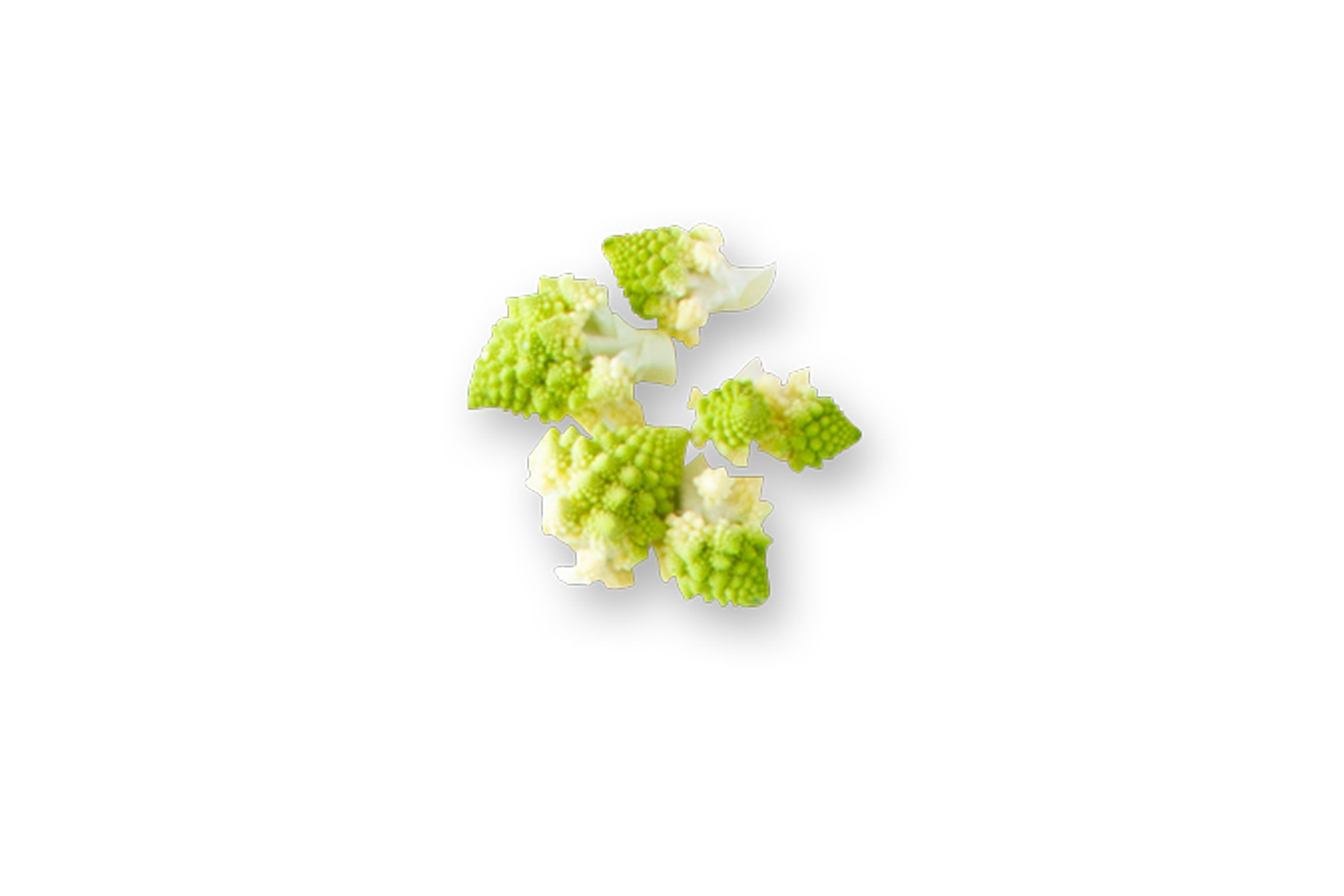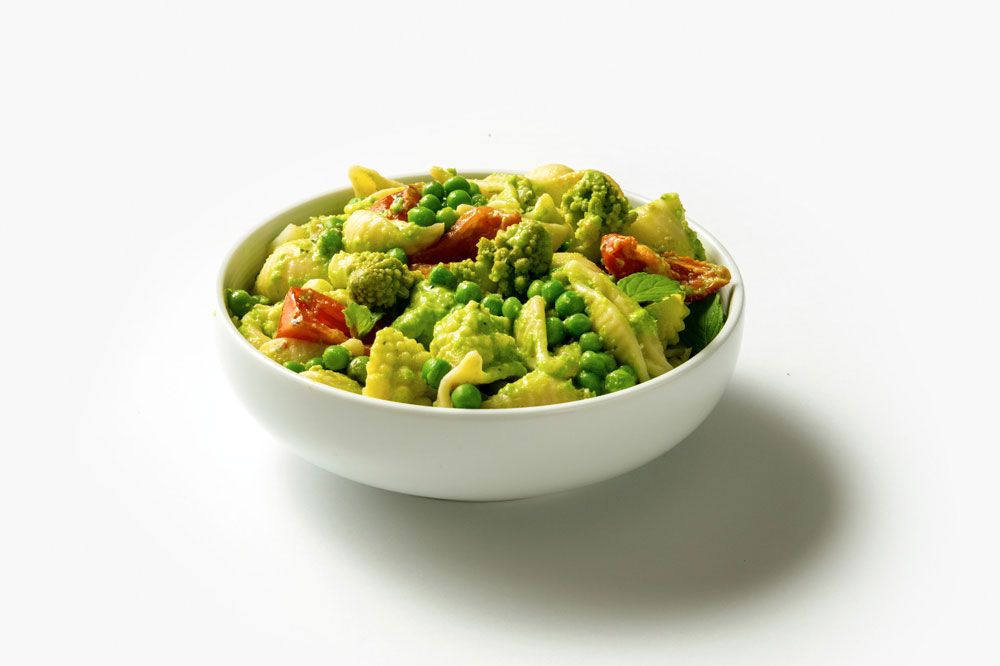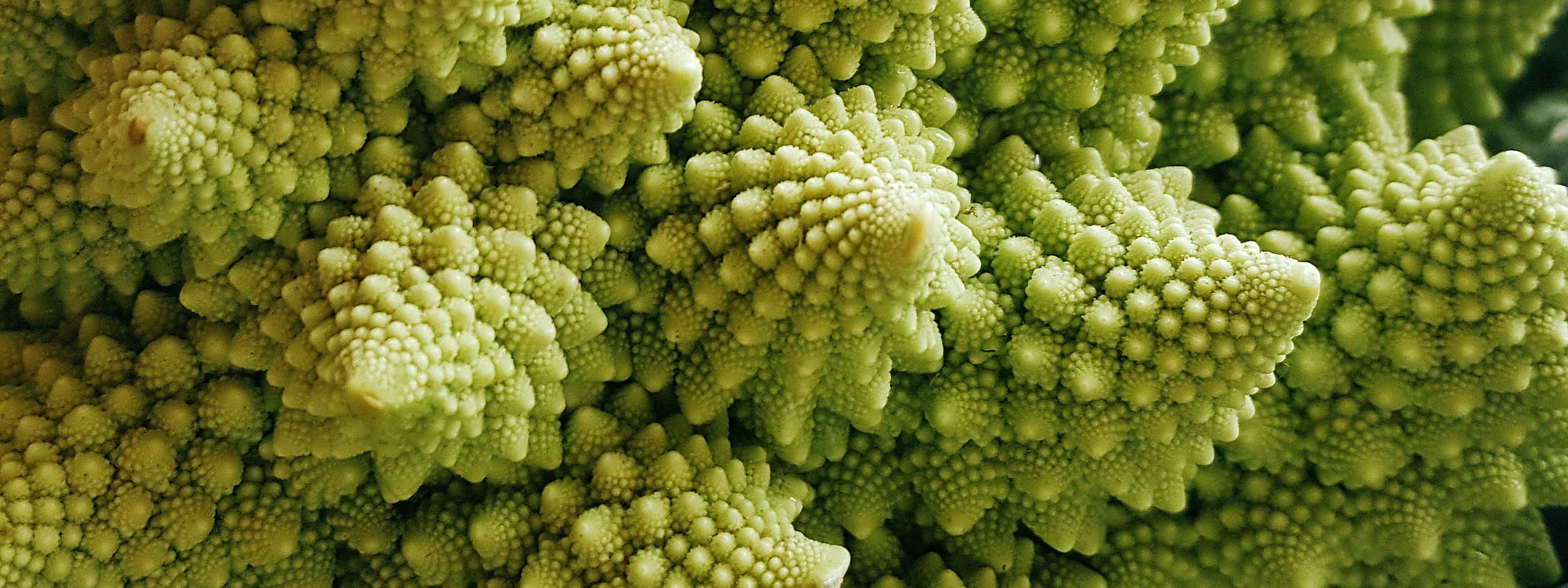Romanesco
The Roman cabbage
Intro
The Roman cauliflower gets its name thanks to the location of its first harvest: Rome. Romanesco is a conspicuous vegetable due to its beautiful and Fibonacci-esque design. Its distinct florets makes it an unmistakable vegetable. Other reasons why romanesco is special, its health benefits and how it differs from regular cauliflower, will be explained below!

What is romanesco?
Romanesco is a type of cabbage that belongs to the Cruciferous plant family (Brassicaceae) a variety of the Brassica oleracea. It’s sometimes referred to as the Roman Cauliflower or Romanesco Broccoli. Flavour-wise, it sits right between broccoli and cauliflower, and possesses a delicate, slightly nutty flavour. It outranks cauliflower also nutrition wise, due to its high concentration of vitamins and minerals. The texture of romanesco is more compact than that of a cauliflower.
Romanesco is easier to digest than other cabbage types. It causes less bloating and can even help calm the stomach.

Where does romanesco come from?
Romanesco was supposedly first grown in Rome, about 400 years ago. Today, it is cultivated in France, Italy, Spain as well as Germany.
Which varieties are there?
Celio
-Fast-growing and annual
-Robust
Gitano
-Light green
-Firm
-Pyramid shaped
-Mould-resistant
Navona
-Dark green
-No external leaves
-Powerful
Punto Verde
-Dark green
-Fast-growing and even texture
-Firm
-Durable
-Pleasant flavour
Veronica
-Light green
-Tower-shaped
-Durable
White Gold
-Neon green
-Small turrets
-Fast-growing
When is romanesco in season?
In Germany, Romanesco is available from the end of May to early October. The harvest period of Romanesco in France, Italy and Spain starts earlier and lasts longer than in Germany.
Ways to prepare romanesco:
Wash and remove external leaves. Chop off the stem.
Romanesco can be consumed raw. Rule of thumb: the younger the vegetable, the tastier.
To cook romanesco, blanch it in salted water for 10-15 minutes and then submerge in cold water. You can also steam, fry or roast romanesco or use it for a gratin. Cooked, it's easier to digest and intensifies the flavour. The longer you cook it, the more intense the flavour.
Fresh/raw romanesco is best preserved in sugar and lemon juice.
Delicious ways to eat romanesco:
On its own with olive oil or (vegan) butter, salt and pepper, or in salads, soups, stews or veggie bowls.
Romanesco nutrition facts per 100g:
| Typical Values | 100g |
|---|---|
| Calories | 38 |
| Fat | 0.9g |
| Carbohydrates | 3g |
| Fibre | 1.8g |
| Sugar | 2.5g |
| Protein | 3.6g |
Nutrients found in romanesco:
Chlorophyll and Karotenoid
Vitamins:
Provitamin A, Vitamin B (u.a. B1, B2, B3, B5, B6, B7, B9, B12), Vitamin C, Vitamin D, Vitamin E, Vitamin K and Folic Acid
Minerals:
Calcium, Potassium, Magnesium, Sodium and Phosphorus

